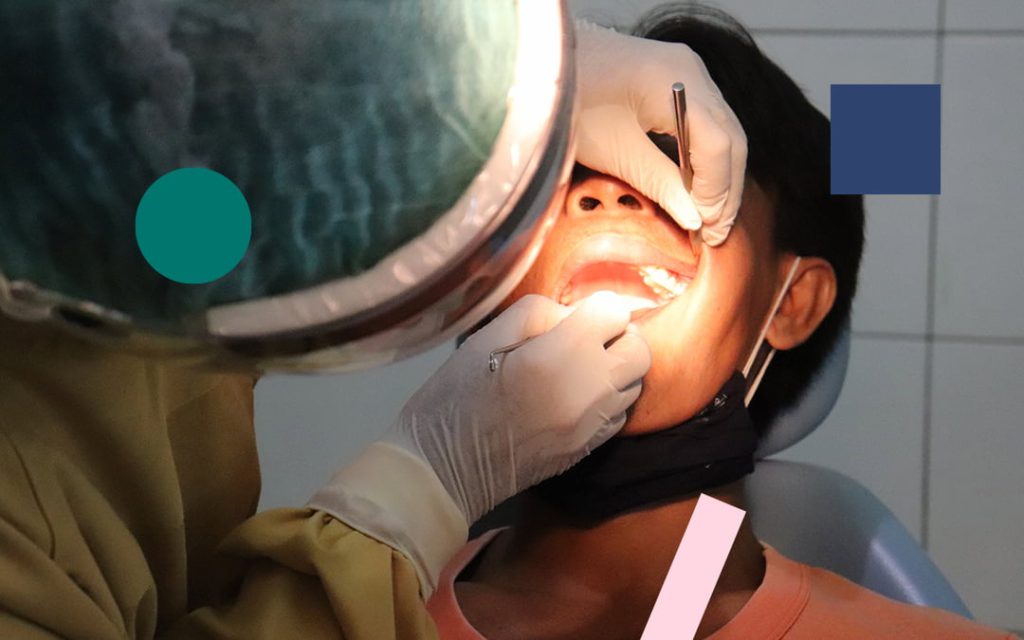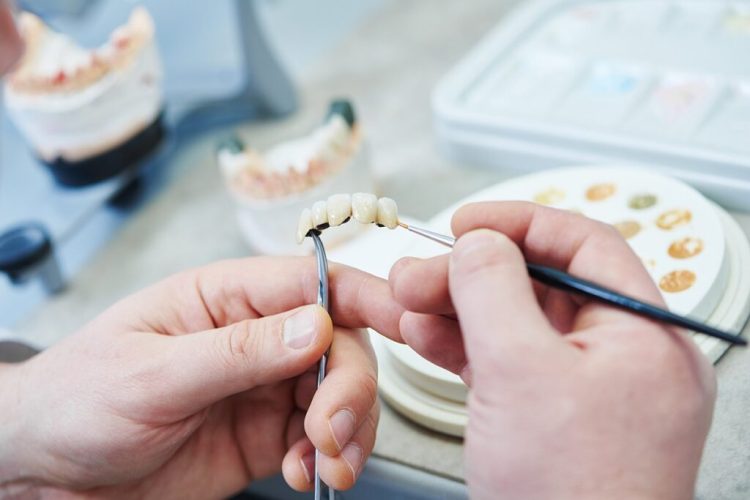Introduction
In recent years, laser dentistry has revolutionized the field of oral healthcare, offering a modern and advanced approach to treating various dental issues. This cutting-edge technology allows for more precise, efficient, and comfortable procedures, making it an attractive alternative to traditional methods. Laser dentistry uses focused light energy to treat a variety of dental conditions, from cavity treatment to gum disease management, and has emerged as a game-changer in improving patient experiences.
Laser dentistry offers several key benefits over traditional methods, such as reduced pain, faster recovery times, minimized bleeding, and enhanced precision. It has opened new possibilities for both preventive and restorative procedures, offering innovative solutions for various dental concerns. By harnessing the power of light energy, laser technology is making dental treatments more accessible, less invasive, and less stressful for patients.
This essay delves into the role of laser dentistry in modern oral treatments, exploring its applications, advantages, limitations, and the future potential of this technology. The discussion will focus on how laser dentistry is transforming the way dental professionals approach common issues like cavities, gum disease, teeth whitening, and soft tissue surgery. Furthermore, it will address patient considerations, including safety, effectiveness, and cost, to provide a comprehensive understanding of this exciting field in modern dentistry.
1. Understanding Laser Dentistry: A Technological Overview
A. What is Laser Dentistry?
Laser dentistry is a dental treatment method that employs laser light to perform dental procedures. The term “laser” stands for Light Amplification by Stimulated Emission of Radiation. Lasers used in dental treatments are specially designed to target specific tissues in the mouth, offering precision and reduced risk of damage to surrounding areas. There are different types of dental lasers, each optimized for various procedures.
- Hard Tissue Lasers: These lasers are used to treat teeth and bone. They are often used for procedures such as cavity preparation, tooth sensitivity treatment, and even some types of dental surgery.
- Soft Tissue Lasers: These lasers are typically used for procedures involving the gums and other soft tissues in the mouth. Soft tissue lasers are used to treat gum disease, remove tissue growths, and reshape gums for aesthetic purposes.
B. How Laser Technology Works in Dentistry
Laser technology works by emitting a concentrated beam of light that can be absorbed by specific tissues. The light energy from the laser is converted into heat, which is used to remove or reshape the tissue being treated. The process is highly precise, allowing the dentist to target only the affected area while minimizing damage to surrounding tissues.
- Cutting and Vaporizing Tissue: In dental procedures, lasers can cut and vaporize tissues, such as decayed portions of teeth or gum tissue.
- Stimulation of Healing: Laser energy can also stimulate cell regeneration, promoting faster healing and reducing inflammation.
C. Advantages of Laser Dentistry
Laser dentistry offers several distinct advantages over traditional dental procedures, making it an increasingly popular choice for patients and dental professionals alike:
- Precision: Lasers can precisely target problem areas, reducing the need for excess removal of healthy tissue.
- Reduced Pain: Many procedures involving lasers require little or no anesthesia, and patients often report less pain compared to traditional methods.
- Faster Recovery: Due to the minimally invasive nature of laser treatments, patients typically experience quicker healing times and less post-operative discomfort.
- Less Bleeding: Lasers can coagulate blood vessels during surgery, minimizing bleeding and reducing the risk of infection.
- Reduced Risk of Infection: The sterilizing effect of laser energy helps to reduce the likelihood of bacterial contamination during and after procedures.
2. Key Applications of Laser Dentistry in Oral Treatments
Laser dentistry has become a versatile tool, with applications across a range of oral health treatments. Below are some of the most common uses of laser technology in modern dental care.
A. Laser Treatment for Cavities and Tooth Decay
One of the most widely recognized applications of laser dentistry is in the treatment of dental cavities. Laser technology offers a non-invasive and highly effective way of removing decayed portions of a tooth and preparing it for a filling.
- Hard Tissue Lasers: Hard tissue lasers are used to target and remove decayed tissue from teeth without the need for drilling. These lasers allow for more precise removal of decay, which means that healthy tooth structure is preserved, leading to better outcomes.
- Minimal Discomfort: Many patients report feeling less discomfort during and after laser treatment for cavities compared to traditional drilling methods.
B. Laser Gum Disease Treatment
Laser dentistry plays a crucial role in the management of gum disease (periodontal disease). Periodontal disease is a leading cause of tooth loss, and effective treatment is essential to preserving oral health.
- Laser for Scaling and Root Planing: Lasers are used to remove plaque and tartar from below the gumline during non-surgical deep cleaning procedures.
- Laser-Assisted New Attachment Procedure (LANAP): This FDA-approved laser procedure removes infected gum tissue and helps stimulate the regrowth of healthy tissue, promoting the reattachment of the gums to the tooth surface.
C. Soft Tissue Procedures and Cosmetic Treatments
Soft tissue lasers are ideal for procedures that involve reshaping or removing soft tissue in the mouth. These procedures are often quicker and less invasive than traditional methods.
- Gum Contouring: Laser dentistry is used to reshape uneven or excessively large gums, creating a more aesthetically pleasing smile.
- Frenectomy: A frenectomy is a procedure to remove or release the frenulum (the connective tissue that can restrict tongue or lip movement). Lasers can be used to perform this procedure with minimal pain and faster recovery.
D. Laser Teeth Whitening
Teeth whitening is one of the most popular cosmetic dental treatments, and laser technology has enhanced this process significantly. Laser-assisted whitening procedures use a special bleaching gel activated by laser light, which accelerates the whitening process and achieves dramatic results in a shorter time frame.
- Laser Whitening Process: During the procedure, a whitening gel is applied to the teeth, and a laser is used to activate the gel, speeding up the chemical reaction and producing a brighter smile.
- Enhanced Results: Laser whitening can often achieve results that are not possible with over-the-counter whitening products, providing patients with a brighter, more even smile.

3. Benefits of Laser Dentistry for Patients and Dentists
Laser dentistry offers several advantages that benefit both patients and dental professionals. Below are some of the key benefits of this advanced technology:
A. Reduced Pain and Anxiety for Patients
One of the biggest benefits of laser dentistry is the reduction in pain and discomfort during and after dental procedures. Many patients are anxious about dental visits, particularly when it comes to procedures that involve cutting or drilling. Laser dentistry often requires little or no anesthesia, and the pain associated with recovery is typically less than that experienced with traditional methods.
B. Faster Recovery Time
Because laser dentistry is minimally invasive, patients typically experience faster recovery times. There is less swelling, bleeding, and discomfort following laser procedures, which means patients can return to their normal activities much sooner.
C. Precision and Accuracy
Laser technology allows dental professionals to perform highly precise procedures, minimizing the risk of damage to healthy tissues. This precision results in better outcomes, including more effective treatments and more successful restorations.
D. Cost-Effectiveness
Though laser dentistry may involve higher upfront costs due to the technology involved, it can ultimately be more cost-effective for both patients and dental professionals. Because laser procedures are faster, they may require fewer appointments, reducing overall treatment costs. Additionally, the reduced risk of complications can decrease the need for follow-up visits.
4. Limitations and Considerations of Laser Dentistry
While laser dentistry offers numerous advantages, it is important to consider its limitations and when it may not be the best option for certain procedures.
A. Limitations in Certain Types of Treatment
Laser dentistry is highly effective for certain types of procedures but may not be suitable for all dental issues. For example, lasers may not be effective for treating certain types of tooth decay or complex dental surgeries, and their use may be limited in pediatric dentistry or in patients with certain health conditions.
B. Cost of Laser Equipment
The initial investment required to purchase and maintain laser equipment can be costly. While laser treatments can be more cost-effective in the long run, the upfront expenses may be prohibitive for some dental practices.
C. Need for Specialized Training
Not all dental professionals are trained to use lasers effectively. Special training is required to ensure that dentists can safely and competently perform laser treatments. Not every dental office is equipped with the necessary technology or expertise to offer laser dentistry.
5. The Future of Laser Dentistry
As technology continues to advance, laser dentistry is likely to become even more widespread and versatile. Researchers are continually exploring new applications for lasers in oral health, from more advanced cosmetic treatments to innovative methods for treating complex conditions like oral cancer.
- Minimally Invasive Procedures: The trend toward minimally invasive dentistry is expected to continue growing, with lasers playing a key role in the development of less painful, more effective treatments.
- Integration with Other Technologies: Laser technology may also be integrated with other dental technologies, such as digital imaging and 3D printing, to enhance precision and outcomes in dental procedures.
Conclusion
Laser dentistry represents a significant advancement in modern oral treatments, offering numerous benefits to patients and dental professionals alike. By providing precise, minimally invasive, and more comfortable treatment options, lasers have improved the way dental procedures are performed, from cavity treatments to cosmetic procedures and gum disease management. While there are limitations and challenges associated with laser dentistry, the continued evolution of this technology holds the potential to make dental care even more effective, efficient, and patient-friendly in the years to come.
As laser dentistry becomes more widely available and integrated into dental practices, patients can look forward to faster, less painful treatments that deliver superior results. The future of dental care is undoubtedly brighter with the introduction of laser technology, and its impact on the field of dentistry is likely to be transformative.













































Discussion about this post